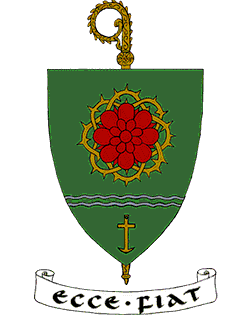Dear Friend of Clear Creek Abbey,
In a remark delivered at a meeting of monastic superiors a few years ago, an abbot argued that the Church should stop cultivating beauty and instead promote ugliness. This ironic statement (uttered no doubt for shock effect) seems to have been aimed primarily at the architectural and artistic beauties of Christian Europe, where the essential thing—the Faith—now appears to be waning, leaving only the splendors of marble and canvas. These magnificent works speak now more to tourists than to humble believers—or so the argument goes.
It is true that we must not pay greater homage to the genius of Michelangelo than to the holy things he represented in his artwork. It is also true that one might pray just as well in the humblest chapel as in a splendid baroque church such as Saint Peter’s cathedral. On the other hand, beauty is not, in fact, some sort of superfluous outcropping of civilization, but an essential attribute of God Himself. As we read in the book of Wisdom,
[Divine wisdom] is more beautiful than the sun, and excels every constellation of the stars. Compared with the light she is found to be superior, for it is succeeded by the night, but against wisdom evil does not prevail (Wis 7:29-30). I became enamored [says Solomon] of her beauty (Wis 8:2).
Man needs beauty. Art is the distinctively human form of expression that speaks truth in a language that rises from the very depths of our nature. It is the very splendor of truth. Sacred art in particular represents a noble calling that is consequent to the fact of the Incarnation of the Second Person of the Most Holy Trinity. It is because God became man and took on a human face—the face being the mirror of the soul—that we can capture in an icon something of the incomparable soul of Christ and thus of the Divine Person that is united to that soul. This is a path of beauty. There are also, of course, false beauties and they all too often prove harmful to mankind. But if we wish to reach our true destination in God, we must move toward that transcendent beauty which, according to Blessed Angela of Foligno, “silences the lips.”
At Clear Creek we strive after Christian beauty as we continue to build a church—and indeed an entire monastery—that is beautiful, for God. Our next phase of construction is the bell tower, where three very fine bells made in France will take their place after spending years ringing in a makeshift belfry on the ground. Surprisingly, some have found the photos of our new sanctuary to be lacking in beauty. But I think this is largely the result of a misconception. It is necessary to understand that there is almost nothing that is actually finished in that part of the church—only the basic structure. It still needs a beautiful altar, flooring, stained-glass windows, and the vault above the brickwork that is already visible. After having no sanctuary at all for several years, it seems already, in its very rough form, a thing of wonder.
At present our community numbers a little over 50 members, with 14 in our novitiate and more to be added soon. Housing is becoming a problem, but we are still getting by with tool sheds outfitted as monastic cells. As soon as possible we will build another monastic building with cells for the monks who are currently outside. We were able to stay in our upper church (unheated) through December 27, but have now had to retreat as usual to the crypt, awaiting more clement temperatures. This is very monastic to have to live in poor conditions. God does not spoil us.
As I mentioned in a previous letter, we now have a beautiful piece of property in New Mexico. Some of the photos in our 2018 calendar give a small idea. We intend to continue building what is necessary to house a small priory there someday. We count on your prayers for that project.
We are most grateful for everything and hope you will join us in giving thanks to God. We are ever appreciative of the very great help you afford us. Please be assured of our prayers for each and every one of our friends.
+ br. Philip Anderson, abbot



